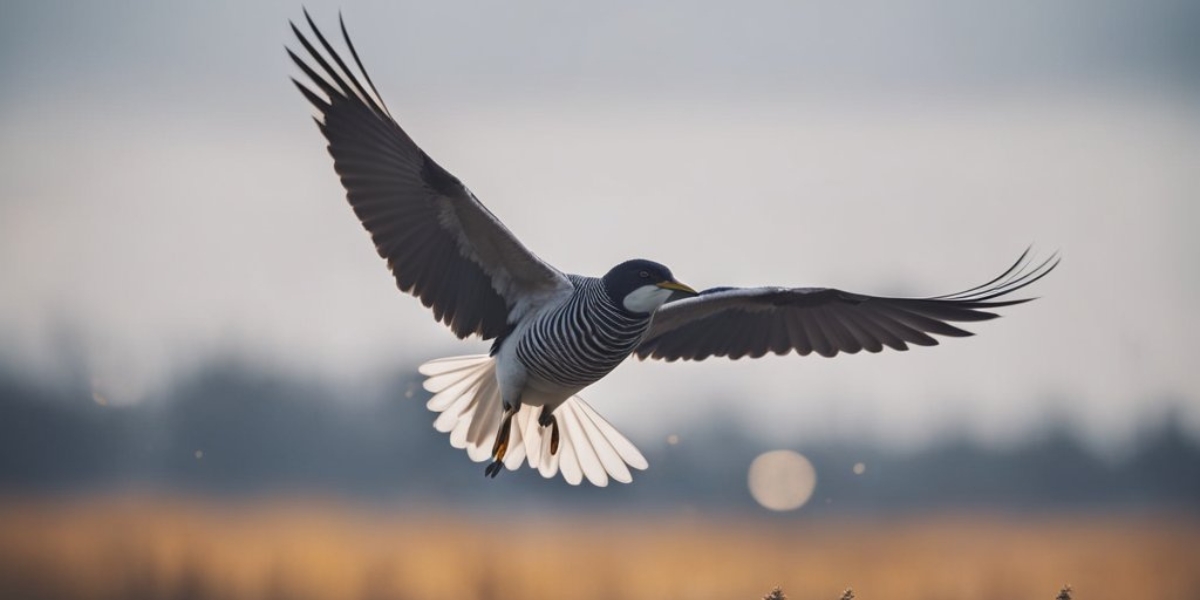Twice a year, billions of birds undertake epic migrations spanning thousands of miles to move between their breeding and wintering grounds. This majestic phenomenon leaves many people wondering: Where do birds fly for the winter?
The short answer is that migratory birds transit along major flyways to reach warmer southern regions of North America, Central America, South America, or even Antarctica. But migration patterns vary significantly depending on the species.
Read on to learn about the major migratory flyways, regional winter destinations for birds, how birds navigate these journeys, and how you can help migrating birds along their way.
Why Birds Migrate for Winter?
Before diving into where birds go in winter, let’s look at why migration occurs in the first place. What drives different species to abandon their breeding territory and embark on dangerous seasonal journeys?
Food Scarcity
The scarcity of food during the winter is a major driver of migration. Many birds depend on insects, nectar, seeds, or aquatic prey. When winter strikes the northern latitudes, food becomes much harder for birds to find and access.
Migrating south allows birds to escape frigid temperatures and find more abundant food sources to survive the season.
Surviving Cold Temperatures
Frigid winter temperatures also directly threaten birds’ survival. Tiny birds, like hummingbirds, are at risk of freezing when temperatures drop below freezing.
Larger birds also expend more energy staying warm in extremely cold climates. Migrating south reduces the risks of hypothermia and starvation.
Finding Mates
Migration also helps some species find better mating and nesting opportunities. Northern summers enable longer daylight hours to successfully raise chicks. Southern winters offer warmer, insect-rich environments to pair off in.
So in summary, seasonal migration is an adaptation allowing birds to find food, stay warm, and reproduce despite geographic challenges.
Major Migratory Flyways
When birds migrate, most species follow predictable routes called flyways. There are four major flyways over North America:
Atlantic Flyway
The Atlantic Flyway follows the Atlantic coast through eastern Canada down to the Caribbean and South America.
Starting & Ending Points
- Starting points: Northeastern Canada, New England, Atlantic Canada
- Ending points: Southeastern Coast, Florida, Caribbean, and northern South America
Key Stopover Spots
- Coastal Connecticut
- Chesapeake Bay
- Coastal Virginia
- Outer Banks, NC
- Florida Everglades
Over 200 species follow this coastal path, including American woodcocks, Atlantic puffins, Canada geese, and bobolinks.
Mississippi Flyway
The Mississippi Flyway follows the Mississippi River valley through the heart of the continent.
Starting & Ending Points
- Starting points: Central Canada, Midwest states
- Ending points: Gulf Coast, Central America, and northern South America
Key Stopover Spots
- Upper Mississippi River
- Missouri River
- Lower Mississippi River
- Coastal Louisiana
- Texas Coastal Prairies
Some birds traversing this central flyway are sandhill cranes, mallards, snow geese, and bobwhite quails.
Central Flyway
The Central Flyway crosses the Great Plains through the middle of North America.
Starting & Ending Points
- Starting points: Prairie Canada, Rocky Mountains
- Ending points: Southern Texas, Mexico, and the Gulf of Mexico
Key Stopover Spots
- Platte River, Nebraska
- Rainwater Basin, Nebraska
- Tallgrass Prairie Preserve, Oklahoma
- Texas Panhandle
- Laguna Atascosa, Texas
Birds here include greater white-fronted geese, lark buntings, McCown’s longspurs, and mountain plovers.
Pacific Flyway
The Pacific Flyway follows the western coastline from Alaska to Patagonia.
Starting & Ending Points
- Starting points: Alaska, Western Canada, and the Pacific Northwest
- Ending points: Baja Mexico, Central America, and West Coast South America
Key Stopover Spots
- Copper River Delta, Alaska
- British Columbia Coast
- San Francisco Bay
- Monterey Bay, California
- Marismas Nacionales, Mexico
Some Pacific flyway birds are bar-tailed godwits, American white pelicans, northern pintails, and whimbrels.
Now that we’ve outlined the major migration routes, next we’ll look at winter destinations by region and species.
Migration Destinations by Region
Where migratory birds ultimately journey depends on their species and starting point. But general patterns emerge by region.
Northeastern Birds
Northeastern breeders like Canada geese, Atlantic puffins, peregrine falcons, and common loons migrate down the Atlantic flyway to overwinter along the southern Atlantic coast and into the Caribbean and northern South America.
Many songbirds, like scarlet tanagers and Baltimore orioles, also follow this coastal route to tropical destinations.
Southeastern Birds
Birds breeding in the southeastern United States, like wood storks, American robins, broad-winged hawks, and ruby-throated hummingbirds, migrate shorter distances down to the Gulf coasts of Florida, Alabama, Mississippi, Louisiana, and Texas, or to Mexico and the Caribbean.
Midwestern Birds
Midwestern birds, including greater white-fronted geese, sandhill cranes, chimney swifts, and barn swallows, head south down the Mississippi and Central flyways to the southern Great Plains, Gulf Coast, Mexico, and Central America for milder climates.
Western Birds
Western breeders in the Pacific flyway, like golden eagles, rufous hummingbirds, northern pintails, and green-winged teals, migrate down the Pacific Coast or through the Southwest to winter in Mexico, Southern California, and Central and South America.
Species That Don’t Migrate
Not all birds migrate. Species able to withstand cold northern winters by caching food, roosting in cavities, and fluffing their feathers include downy woodpeckers, black-capped chickadees, boreal and great gray owls, white-breasted nuthatches, and wild turkeys. They tough out frigid temperatures as far north as Canada and Alaska.
How Birds Navigate on Migration
The navigational abilities of migratory birds are nothing short of incredible. Relying on the sun, stars, earth’s magnetism, memory, and scents, birds follow predetermined flyways with amazing accuracy.
Using the Sun and Stars
Birds partly use the sun’s position during the day, along with stars and the milky way band at night, to orient themselves in the right direction. On cloudy days, they can still detect polarized light patterns for navigation.
Detecting Earth’s Magnetic Field
Birds contain deposits of a magnetic mineral called magnetite in their beaks and brains. This enables them to actually sense and use the earth’s magnetic field, like a compass, to determine their orientation.
Leveraging Landmarks
Familiar man-made and natural landmarks like rivers, coastlines, mountains, cities, and wetland areas help guide birds along fixed migration routes.
Harnessing Smell and Memory
Scents and memories of stopover spots further aid navigation for migratory birds. Returning to the same breeding and wintering grounds year after year also relies on mental mapping and recognition.
So in combination, migratory birds utilize all their senses, magnetic capabilities, and mental mapping to commence their yearly odysseys between seasonal ranges. It’s one of the most awe-inspiring navigation systems in the animal kingdom.
Challenges Birds Face During Migration
The stamina required for migratory journeys is immense. Birds face numerous threats and challenges along the way as they battle exhaustion and starvation:
Finding Stopover Habitat
Migration requires meticulous timing to ensure birds can fuel up and rest at stopover habitats along their route. But human activity threatens many wetlands, forests, and grasslands that birds require for pit stops.
A lack of healthy stopover options can be devastating. Sites like Nebraska’s Rainwater Basin provide essential migratory habitat for shorebirds and waterfowl.
Battling Exhaustion and Starvation
The physical exertion of migration is extreme. Some tiny songbirds weighing under 1 ounce might migrate up to 3,200 miles. Nonstop ocean crossings of 60 hours or more push birds to the brink physically. Finding ample food at stopovers is key to avoiding exhaustion and starvation.
Avoiding Predators
While on migration, birds are constantly vulnerable to predators like raptors, snakes, and cats. Being unfamiliar with new stopover territories raises predatory risks for migrating species. Staying vigilant is essential to survival.
Overcoming Weather Obstacles
From dense fog to fierce winds to turbulent storms like hurricanes, inclement weather poses major hazards for migrating birds. Navigating unpredictable conditions and surviving extremes pushes birds’ endurance.
Navigating Human-Made Obstacles
Finally, human structures like glass windows, power lines, wind turbines, and communications towers present lethal collision threats. Light pollution from cities can also disorient nocturnally migrating birds. Minimizing these man-made impacts helps protect migrants.
So migratory birds truly run an grueling, obstacle-filled gauntlet twice each year. This makes protecting habitat and resources along their routes all the more important.
How to Help Migrating Birds
If you’d like to support migrating birds on their epic seasonal journeys, here are some tips:
Provide Food and Shelter
Supply backyard feeders and bird baths to help refuel migrants. Plant native flowers, shrubs, and trees to provide nutrition through seeds, nectar, fruits, and insects. Leave brush piles as shelter.
Promote Bird-Friendly Habitats
Support the conservation of wildlife refuges, parks, sanctuaries, and preserves that protect essential migratory stopover habitat. If you own shoreline property, maintain vegetation cover and natural areas.
Keep Cats Indoors
Cats allowed outdoors heavily prey on migrants. Bringing cats inside helps protect vulnerable traveling songbirds stopping by your yard.
Make Windows Safer
Minimize collisions by marking glass using striping tape, hanging strings or ribbons, or installing screens. Turn off unnecessary lights during migration peaks.
Get Involved in Citizen Science
You can assist researchers in studying migration by joining programs like the Cornell Lab of Ornithology’s eBird to report bird species you spot or by volunteering at migratory hotspots.
Following these tips will help make backyards and communities more bird and migration-friendly.
People also Read:
Conclusion
From the Arctic regions of Canada to the forests of South America, millions of birds embark on migratory odysseys each year to escape harsh northern winters. Using inborn navigation abilities, memory, and such flyways as the Atlantic, Mississippi, Central, and Pacific routes, birds transit to find warmer climates, plentiful food, and mating opportunities.
Backyard natural areas, wildlife refuges, parks, and preserves all provide vital stopover habitat for re-fueling along birds’ lengthy migrations. Supporting healthy ecosystems and resources benefiting migratory birds ensures these remarkable species endure their strenuous seasonal journeys.

